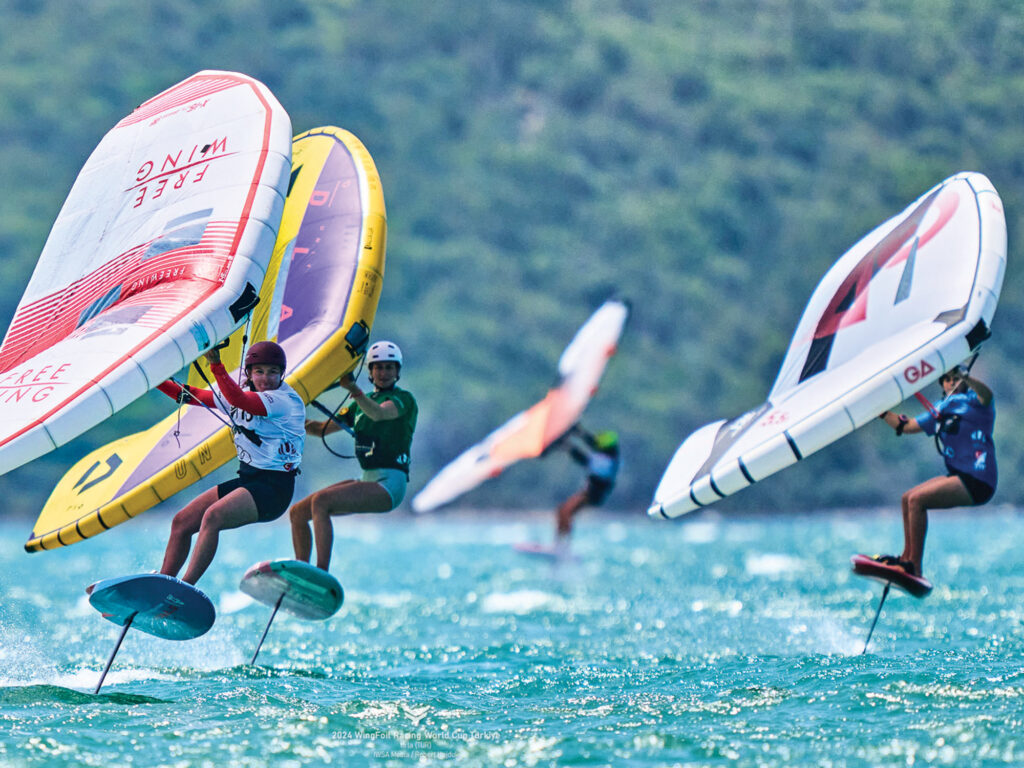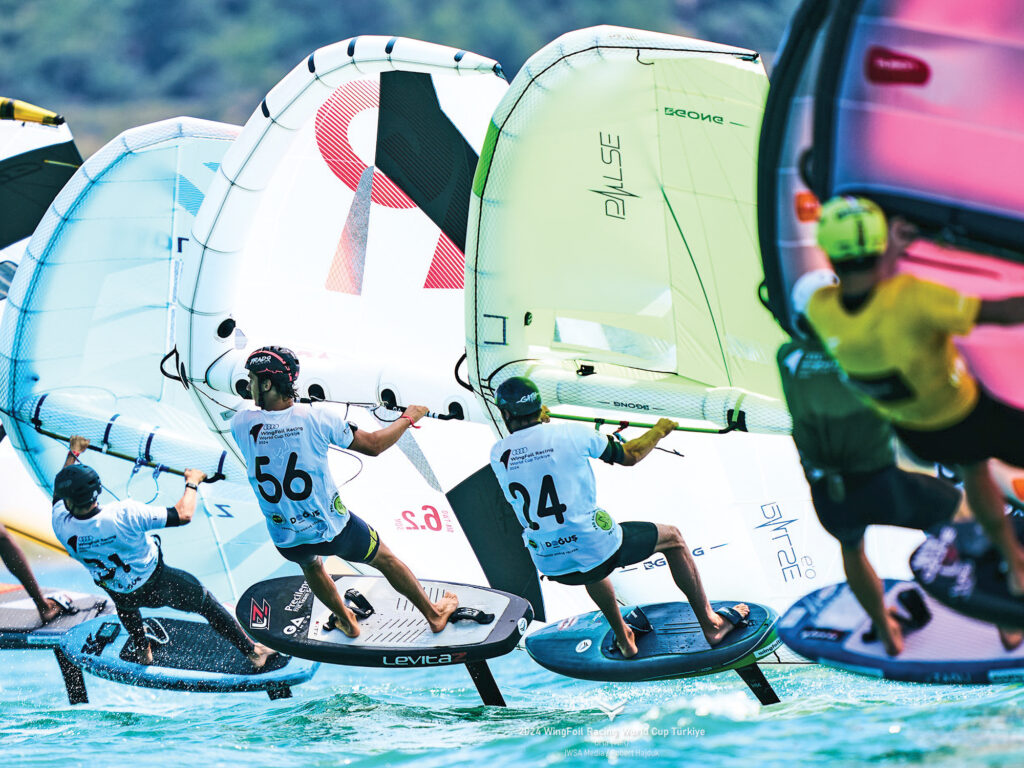
Wingfoiling is a new and exploding addition to the world of sailing, and naturally it has a racing component built into its foundation. Wherever there’s wind and water these days, wingfoilers can be seen flying fast with light and minimal equipment, and when two foilers meet, who doesn’t want to see how fast they can go? And who’s faster? Even though wingfoiling is relatively new, there’s already plenty of racing developing, internationally and domestically. Whether you are new to wingfoiling and want to race for the first time, or you want to push yourself to the next level, here are my top-10 tips to make the most of your wingfoil racing.
Enjoy the racing. Wingfoil racing is a unique way to share the water with a lot of people. One of the coolest things about foiling is how silently you sail across the water. You can be very close to another person and have a conversation, which makes racing much more social and competitive.
Be open to learning new things. When I work with the kids on the Wylde Wind & Water Wingfoil Youth Team, I tell them that the best way to improve is to race. Racing teaches us so many invaluable lessons about equipment management, reading the water, sailing in a variety of conditions, and pushing our comfort zones. Every race will teach us something, so we have to remember to be open to learning from it. I learn as much from one regatta as I could from an entire month of training on my own.
Don’t stress the gear. The best equipment with which to start racing is the gear you have. Use it to participate in a local race series, and as you get more familiar with the racing formats and as your skills improve, then you can purchase more-advanced equipment for wingfoil racing. Don’t let your equipment be your barrier of entry to try something new.
Learn the different starts. There are three types of starts in wingfoil racing: traditional upwind starts for when you are racing windward/leeward courses; reaching starts for when you are slalom racing; and rabbit starts for when you are distance racing or marathon racing.
As your skills improve, you can purchase more-advanced equipment for wingfoil racing. Don’t let your equipment be your barrier of entry to try something new.
The start sequence is typically a 3-minute countdown. Because wingfoilers sail very quickly, you cover a lot of ground in a short amount of time, so calculate this into your prestart routine so that you know where to line up at 30 seconds before your start. The goal is to cross the start line going full speed—and in control. You always want to be on foil during the prestart sequence, so jibe or tack in puffs—whatever keeps you on the foil—so you can ensure that you’re foiling when you cross the line.
Pump for extra speed off the line. When pumping for speed off the start, use your whole body, starting with your legs, to compress the foil into the water to generate lift. As the board starts to rise, extend your arms and capture more wind in your wing, which will counter the lift of the foil and propel you forward. When pumping, engage your core, not only for strength and power, but for stability as well. Remember, you are the connection between the wing and the board. Be a solid connection.

Stay fast and tight. On the typical wing racecourse, there are two major obstacles to avoid: dirty air and dirty water. Dirty air can be really disruptive to your top-end speed and your upwind or downwind angle, so do your best to find lanes of clean air to avoid wing turbulence. Wing turbulence is one of the easiest ways to catch a wing tip in the water, which often results in swimming. Foils disturb the water and create turbulence from the introduction of air down the mast. Somebody else’s foil turbulence can knock you off balance or cause your foil to cavitate. Learn how to anticipate foil turbulence, and if you can, avoid it.
Somebody else’s foil turbulence can knock you off balance or cause your foil to cavitate. Learn how to anticipate foil turbulence, and if you can, avoid it.
Embrace different courses. Wingfoil racing can be short and intense, which keeps it exciting. Slalom races are anywhere from 3 to 6 minutes, course races are about 8 to 12 minutes, distance races are around 20 to 25 minutes, and marathon races are at least 45 minutes.
Enjoy the entire wind range. Wind minimums and maximums depend on the location and sea state as well, but race organizers typically aim to sail in 6-knot minimum. And the wind maximum? That depends on the race committee, however, I recommend getting a small wing because wingfoil racing in 35 to 40 knots is chaotic but a ton of fun.
Clean and safe mark roundings. It’s especially important to pay close attention to your exit angle from a mark rounding. You’re moving at a high rate of speed, and your exit angle can make or break your race. Also, just as you would off the starting line, pump out of the turns to accelerate.
Find your fleet. Where to wingfoil race? There are many race opportunities around the world, including the high-level Wingfoil Racing World Cup tour, GWA Wing Foil, X-15 Class races (one-design), and national and local races. Connect with your local sailing club or federation to learn more information about the upcoming races in your region, and if you don’t have a local wingfoil racing scene, start one. All it takes is another winger.









